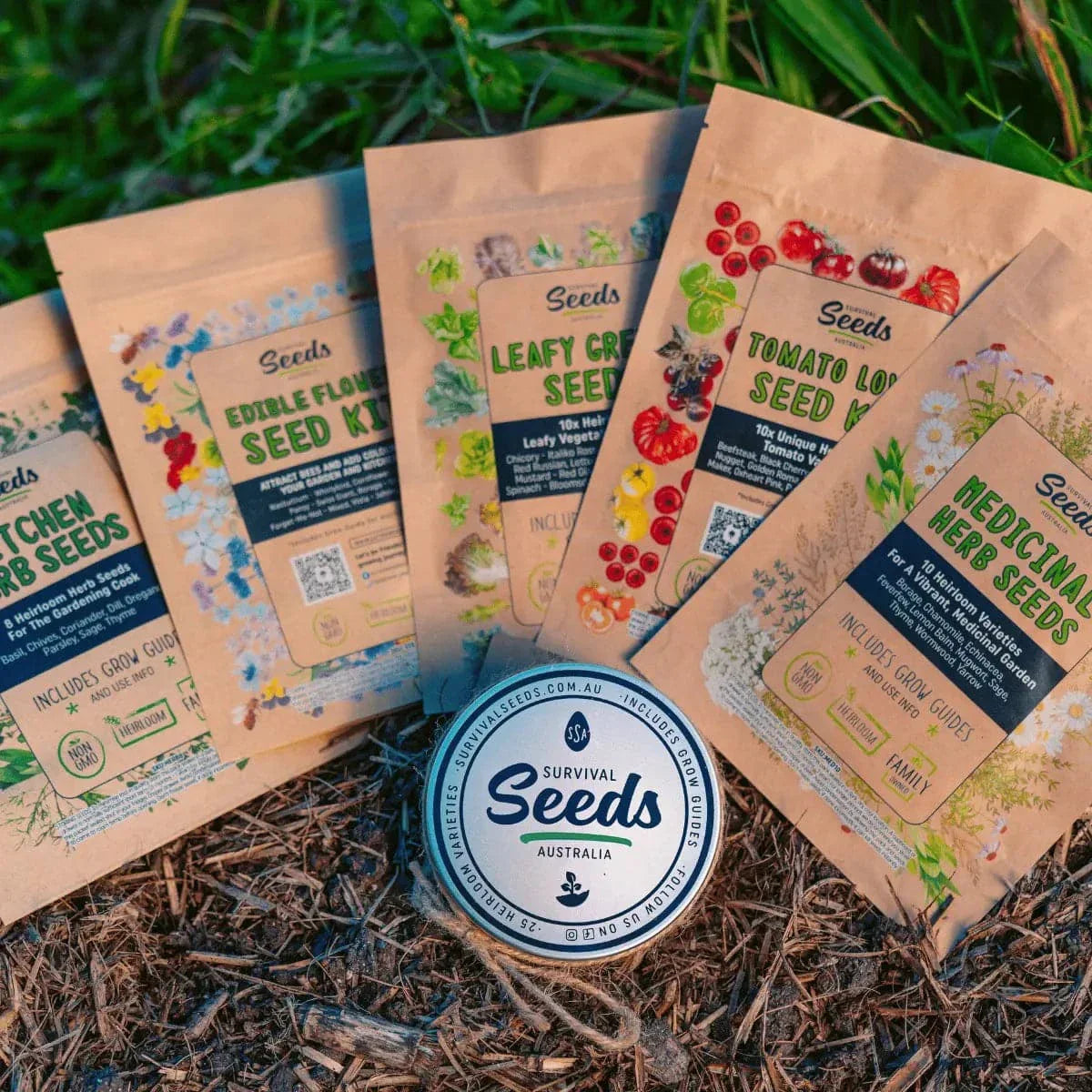Introduction
Overview of Pansies
Pansies are hybrid plants derived from the Viola genus, known for their large, face-like blooms in a multitude of colors. They are versatile, thriving in garden beds, borders, and containers, and are particularly suited to Australia's varied climates.
Culinary and Medicinal Benefits
- Culinary Uses: Pansy flowers are edible and can be used to garnish salads, desserts, and beverages, adding a splash of color and a mild, slightly sweet flavor.
- Medicinal Benefits: While not commonly used in modern herbal medicine, pansies have been traditionally employed for their anti-inflammatory and soothing properties.
Planting Pansies
Soil Preparation and pH Requirements
- Soil Type: Pansies prefer well-draining, fertile soil enriched with organic matter.
- pH Level: They thrive in slightly acidic to neutral soil, with a pH between 6.0 and 7.0.
Spacing and Depth for Seeds
- Sowing Depth: Sow seeds at a shallow depth of 1/8 inch (3 mm).
- Spacing: Space plants 6–8 inches (15–20 cm) apart to allow for adequate air circulation and growth.
Best Seasons for Planting
- Cool Weather Plant: Pansies flourish in cooler temperatures, making them ideal for planting in autumn and winter across most Australian regions.
- Succession Planting: For continuous blooms, consider planting in succession every few weeks during the cooler months.
Caring for Pansy Plants
Watering Needs
- Consistency: Keep the soil consistently moist but not waterlogged.
- Frequency: Water deeply once or twice a week, adjusting for rainfall and temperature variations.
Managing Temperature Stress
- Heat Sensitivity: Pansies can become stressed in high temperatures. In warmer regions, provide partial shade during the hottest part of the day to prolong blooming.
Fertilisation Tips
- Balanced Fertiliser: Apply a balanced, slow-release fertiliser at planting time.
- Avoid Over-Fertilising: Excessive fertilisation can lead to lush foliage with fewer blooms.
Pest and Disease Management
Common Pests
- Aphids: Small insects that feed on sap, causing distorted growth.
- Slugs and Snails: Mollusks that chew holes in leaves and petals.
- Spider Mites: Tiny arachnids that cause stippling and discoloration of leaves.
Companion Planting
- Good Companions: Plant pansies alongside spring bulbs like tulips and daffodils for a vibrant display.
- Avoid: Planting near aggressive ground covers that may overshadow pansies.
Organic Pest Control Methods
- Neem Oil: Effective against aphids and spider mites.
- Handpicking: Remove slugs and snails manually during early morning or late evening.
- Diatomaceous Earth: Sprinkle around plants to deter crawling pests.
How to Grow Pansies in Pots
Container Choice
- Size and Drainage: Select a pot at least 6–8 inches (15–20 cm) deep with drainage holes. Proper drainage is essential to prevent waterlogging and root rot.
- Material: Terracotta, ceramic, or plastic pots work well, but ensure the container is lightweight if moving is necessary.
Soil Mix
- Use a high-quality potting mix enriched with compost or organic matter.
- Avoid heavy garden soil, as it can become compacted and hinder drainage.
Planting Pansies in Pots
- Fill the container with the prepared potting mix, leaving about 2–3 cm of space at the top for watering.
- Gently transplant seedlings or sow seeds directly into the container, spacing them about 6–8 inches (15–20 cm) apart.
- Lightly press the soil around the base of each plant and water thoroughly.
Placement
- Place the pot or container in a location that receives full sun to partial shade. In hotter climates, afternoon shade is recommended to prevent stress.
Care for Potted Pansies
- Watering: Water deeply when the top inch of soil feels dry. Avoid letting the soil dry out completely.
- Fertilizing: Apply a diluted liquid fertilizer every 2–3 weeks during the growing season.
- Deadheading: Regularly remove spent flowers to keep the plants looking tidy and encourage new blooms.
Common Challenges in Pots
- Drying Out Quickly: Mulch the surface of the soil to retain moisture, or group pots together to create a microclimate.
- Overcrowding: Avoid overplanting, as poor airflow can lead to fungal diseases like powdery mildew.
Harvesting Pansies
Harvesting Flowers
- When to Harvest: Pick flowers when they are fully open but still fresh for best results.
- How to Harvest: Use clean, sharp scissors or pruning shears to cut flowers at the base of the stem.
Proper Techniques for Cutting
- Avoid removing too much foliage, as this can hinder plant growth.
- Cut flowers early in the morning when plants are hydrated for the longest vase life.
Storing Pansies for Freshness
- Short-Term Use: Store harvested pansy flowers in a cool, damp paper towel inside a plastic bag in the refrigerator for up to 3 days.
- Long-Term Use: Press flowers for crafts or crystallize them for edible decorations.
FAQs
Can pansies survive frost?
Yes, pansies are frost-tolerant and can often survive light snow, making them ideal for cool-weather gardens in Australia.
Do pansies need full sun?
While pansies thrive in full sun, they can also tolerate partial shade, particularly in hotter climates where too much sun can cause stress.
Are pansies perennial or annual?
Pansies are technically short-lived perennials but are often grown as annuals or biennials.
How can I make pansies bloom longer?
Deadhead spent flowers, keep the soil consistently moist, and fertilize sparingly to encourage prolonged blooming.
Can I grow pansies indoors?
Yes, pansies can grow indoors with sufficient light. Place them in a sunny window or under grow lights for the best results.
Conclusion
Pansies are a delightful addition to any garden, offering vibrant colors and versatility for beds, borders, and containers. By following the proper planting and care techniques outlined in this guide, Australian gardeners can enjoy months of cheerful blooms. Whether you're growing pansies to brighten your outdoor space, attract pollinators, or add a splash of color to your meals, these flowers are a rewarding and low-maintenance choice.










